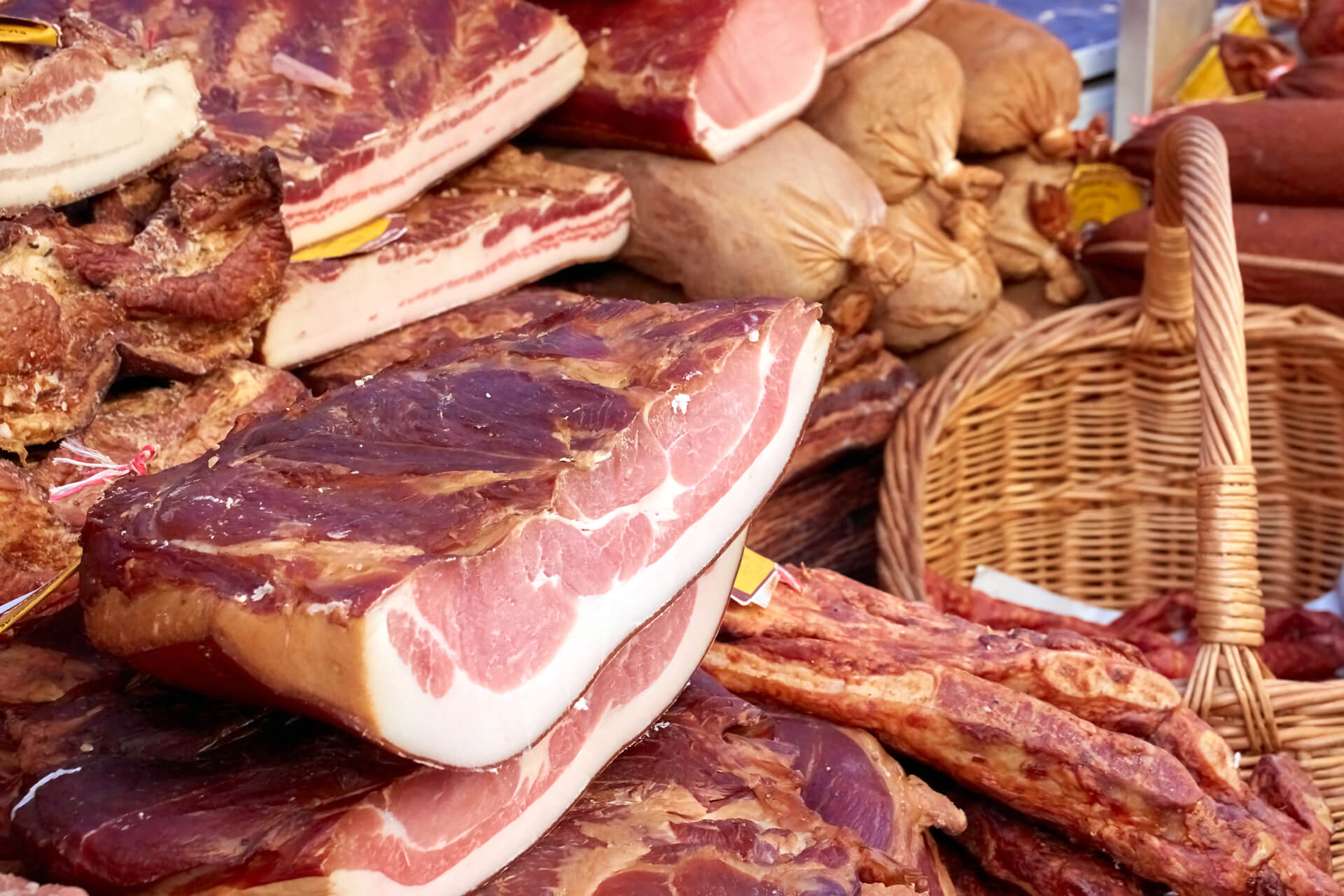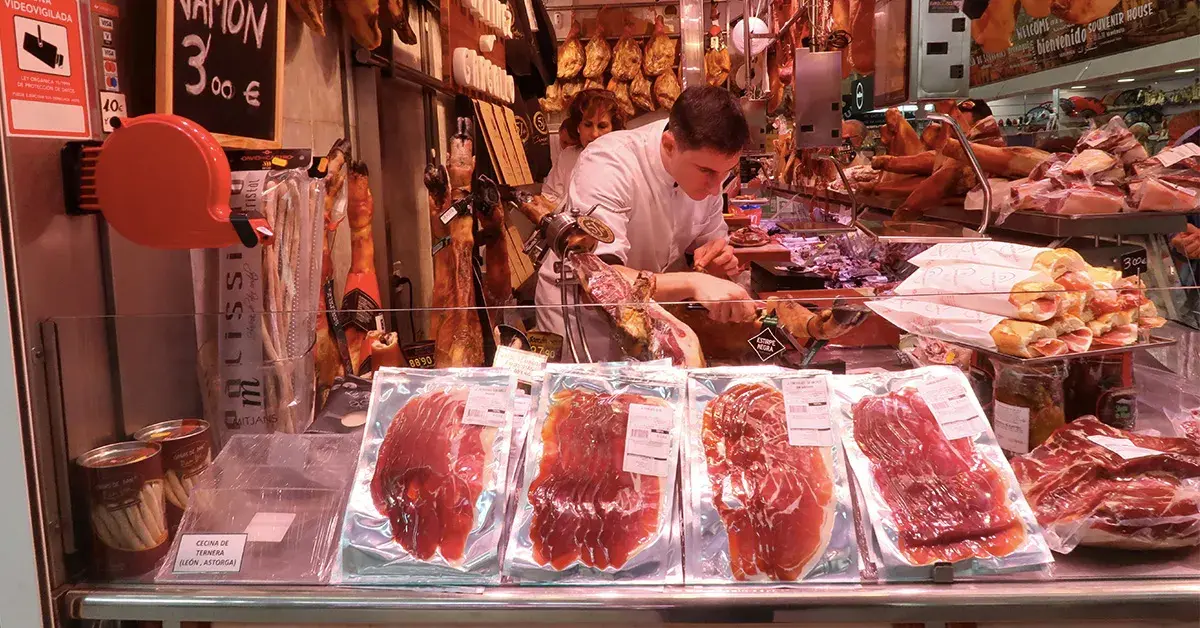Bagley Farms Meat Market Edwardsville IL: Your Best Destination for Neighborhood Meat Selection
Bagley Farms Meat Market Edwardsville IL: Your Best Destination for Neighborhood Meat Selection
Blog Article
Reveal the Art of the Butcher's Cut in a Modern Meat Market
In the ever-evolving landscape of contemporary meat markets, the butcher's cut has actually transcended its traditional roots, merging age-old workmanship with modern techniques. bagley farms meat market edwardsville il. Today's butchers are not just cpus of meat; they are experienced artisans who highlight sustainability and ethical sourcing. Their knowledge in choose and preparing cuts customized to certain cooking needs supplies an unrivaled dining experience. What genuinely sets the modern-day butcher apart is their capacity to build a deeper connection in between customers and the beginnings of their meat. Exactly how do these masters balance custom with development, and what implications does this have for the future of meat usage?
Evolution of Butchery Methods

The mid-20th century saw butchery techniques even more fine-tuned by clinical insights right into muscle biology and meat aging, enhancing both tenderness and taste. Developments like vacuum cleaner product packaging and refrigeration extended product shelf-life, allowing butchers to branch out offerings and improve high quality control. This period additionally marked the increase of specific equipment, such as band saws and meat slicers, which raised precision and effectiveness in meat processing.
Digital systems now assist in monitoring pet provenance and optimizing cuts to satisfy particular customer choices. Additionally, a revival in artisanal butchery has actually emerged, mixing conventional abilities with modern-day understanding to cater to customers seeking ethical and lasting meat options.

Understanding Meat Cuts

Comprehending the ins and outs of meat cuts is essential for both butchers and consumers looking for quality and value. For butchers, precise cuts show ability and regard for the craft, making sure minimal waste and optimal return.
The key classifications of meat cuts consist of primal, sub-primal, and retail cuts. Primitive cuts, such as the loin, rib, and chuck, are the huge sections at first separated from the carcass. Butchers then damage these down additionally right into sub-primal cuts, prior to finally producing retail cuts offered to consumers, like ribeye or tenderloin. Each phase requires cautious attention to anatomical framework and muscle mass structure.
Understanding muscle mass make-up is essential; muscles used more frequently by the pet have a tendency to be tougher and are best fit for slow food preparation methods, while less-used muscular tissues, like those found in the loin, are a lot more tender and suitable for grilling or roasting. Familiarity with these differences encourages consumers to make educated selections, boosting their culinary undertakings.
Picking Quality Meat
Picking the best meat involves even more than just picking an aesthetically enticing item from the screen. The art of selecting top quality meat calls for a discerning eye and expertise of specific attributes that signify freshness and excellence. Pay interest to the color; beef ought to have a brilliant, cherry-red color, while lamb must show a soft pink tone, and pork a pale pink. This suggests the meat is fresh and hasn't been subjected to oxygen for as well long.
Secondly, consider the marbling, which describes the white flecks of fat within the muscle mass. Proper marbling is a crucial indication of inflammation and taste, as it thaws throughout food preparation, improving the meat's juiciness. Keep in mind, greater marbling commonly associates with superior high quality cuts, such as USDA Prime.
Structure is one more important element; meat needs to feel firm to the touch, not slimy or overly soft. Furthermore, bear in mind the aroma. Fresh meat ought to have a clean, neutral smell, devoid of any sour or off-putting odors.
Coupling Cuts With Cooking Approaches
Successfully pairing cuts of meat with the appropriate cooking approaches is important for accomplishing optimum taste and structure. Different cuts vary in tenderness, marbling, and connective cells content, each requiring specific techniques to unlock their capacity. For example, tender cuts like filet mignon and ribeye, with their intrinsic marbling, advantage from high-heat, quick-cooking approaches such as cooking or pan-searing. These approaches boost the meat's all-natural tastes and make certain a juicy finish.
On the other hand, harder cuts like brisket and chuck roast are abundant in collagen, which breaks down right into gelatin when prepared slowly. These cuts are perfect for braising or slow-moving roasting, allowing the meat to tenderize gradually and create deep, intricate tastes. Similarly, cuts such as brief ribs and pork shoulder prosper with slow-cooking techniques, where extended cooking times transform their robust appearances right into succulent meals.
Lamb shanks and oxtail, which call for prolonged food preparation to tenderize, are excellent candidates for stewing or slow-moving simmering. These methods coax out rich, passionate flavors while keeping wetness. By comprehending the one-of-a-kind characteristics of each cut, chefs and home cooks alike can raise their cooking productions, making certain each dish is both pleasing and memorable.
The Butcher's Duty Today
Browsing the advancing landscape of the modern-day meat market, the butcher's duty today extends beyond simple preparation of cuts. Contemporary butchers are cooking craftsmens, educators, and advocates for lasting methods.
Along with crafting exact cuts, butchers now engage straight with customers, offering cooking recommendations and customizing selections to suit specific needs and preferences. Their know-how in meat aging, marbling, and taste accounts empowers consumers to make educated decisions, enhancing their culinary experiences. This personalized service exemplifies the butcher's progressing role as a relied on expert in the cooking area.
In addition, butchers are critical in minimizing Learn More waste, making use of whole animals to create varied products such as sausages and supplies - bagley farms meat market edwardsville il. This thorough technique more not only values the animal but additionally straightens with modern sustainability objectives. By doing this, the modern-day butcher personifies both tradition and advancement, adapting to an ever-changing market while preserving the virtuosity and stability of their craft

Final Thought
Mastery in understanding diverse meat cuts and quality indicators empowers butchers to supply educated referrals, aligning details cuts with optimum cooking techniques. By honoring historical methods while embracing contemporary demands, the butcher's duty stays crucial in today's blog here sophisticated meat market.
Report this page